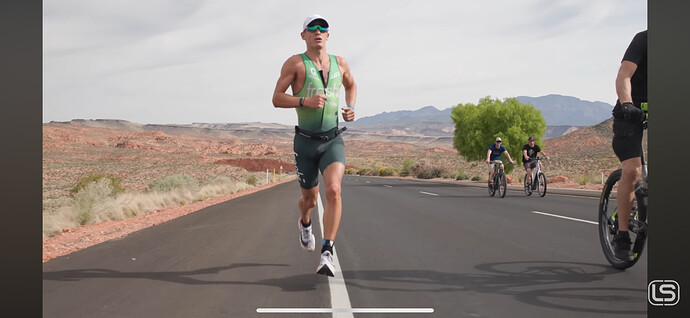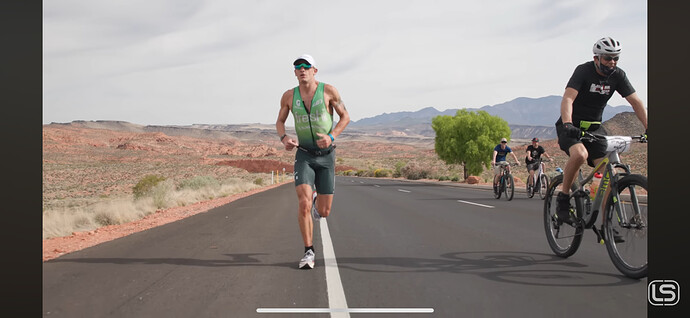4% is a bodybuilder on stage for a show, ready to pass out. Some have died being that low and under
This is really interesting. I had a coach years ago that said he did a bunch of metabolic-cart tests to his athletes and endurance athletes actually burn less calories while resting.
Then again, he is an old-school cycling coach that pushed for very low body weight, so could be full of it.
Would be good if someone had actual scientific facts on this.
I think this is why he needs to bring a registered dietician on board the team. I’m currently reading Clinical Sports Nutrition (Louise Burke), and some of his comments didn’t jive with what I recall from the book.
He’s applying an “activity factor” to his basal metabolic rate, which is intended to be a simple way to estimate total energy expenditure (e.g., his example of a tradesman who works with their body all day yields a higher “activity factor” than an office worker).
If you’re separately tracking your expenditure from exercise, you typically wouldn’t also apply a high activity factor (unless you’re a tradesman AND an athlete). E.g., when you set up Cronometer, it tells you if you’re importing activity from a smart tracker, you should set the activity level to “sedentary.” Maybe Lionel should though for practicality, since apparently he’s been losing weight (I think he used to be 165ish in older videos, and now he says he’s around 157).
In terms of an active individual having a higher BMR, you do burn more calories if you have more muscle, you would get a bit more calories from excess post-exercise oxygen consumption (EPOC), and the thermic effect of food (TEF) would be higher due to food intake.
This is what stood out to me. That’s crazy low. I was down to 4% as a collegiate distance runner and subsequently got a giant femoral stress fracture that season. From then on it was “eat whatever whenever”.
There were some knowledgeable people on a call a few minutes ago and I asked how they monitor this in cyclists. They kind of ignored the body fat % but they did ask what is BMD was which he would have got with the scan. Funny part is running is apparently prescribed in the off season to help here
I wonder if the younger generation of athletes coming through ITU have access to resources to monitor these things
i had gotten an dexa scan for an athelte in 2008 that univertity would do that with every female as a standard procedure when they did some physiological testing.
otherwise the cost is around 100 to 150 euro in europe so a good investment
overall the awareness of fueling is higher with middle and long distance atheltes than with itu athletes especially younger itu athletes often have no clue
but that is defo changing in the last few years but still a serious issue.
As a Registered Dietitian I find this sad and kind of frustrating. I’ve worked with athletes as young as middle and high schoolers. He’s a top level pro, this should have been a higher priority.
I think in one of his videos a long time ago he mentioned working with an RD and didn’t really apply the information.
I love Lionel but feel that this is some part related to not having a coach that could step in a get him set up with someone to work with.
I want to see him keep winning, hopefully he gets someone on board to guide him.
I’m 100% armchair quaterbacking right now, but if the chronic under fueling is correct, would this be a potential reason why he typically does better on higher intensity / lower volume regimes where the total calorie expenditure is likely lower?
Training is obviously quite individual, but if he’s under fueling then being able to sustain a 30hr training week with say 80/20 distribution is going to be a lot harder than sustaining a 20hr training week with a higher level of intensity
I love Lionel but feel that this is some part related to not having a coach that could step in a get him set up with someone to work with.
I think at this point we all know that is never going to happen, and things like this will keep happening to him until he retires.
He also gives me the impression that he really enjoys the journey and figuring things out for himself. He seems to be a very curious person who doesn’t just like to “follow the recipe”, but likes to understand why the recipe is that way.
This is one of my favorite videos of his. He really is putting out some great content.
Not to harp on the calorie muscle thing as no one 30 vs 38 in endurance sport has put muscle on with chemical help.
So a lose in muscle mass should be expected and it’s why average Norms change in health standards as we age .
Also if Lionel ate like said 4000 calories a day that’s 28000 cal a week.
If he exercises 20 hours a week all at race pace ( top effort which is impossible) it would be 20,000 calories. Then daily expenditure.
But let’s be real it’s More likely over a week eats 28,000 burns is training 12,000 -14,000 and then 14,000- 16,000 weekly . Hence good to not gain fat and have energy to train and win the last two big 70.3 races in North America.
That said it would have nothing to do with why you hurt a specific part of your body this stress positions and lack of strength of movement under load in that area is why. As these photos easily illustrate. Some humans it happens in 2 weeks of training , some 2 years , some 20 years but it’s a matter of time .
I mean, why does it have to be one OR the other? Why can’t it be both contributing to his issues?
He also said something that caught my attention: “I pee a lot during the night”. I’m taking Flomax because of this particular issue, as I too was waking up 3-4 times during the night to pee, and it’s not easy for me to pee when I’m sleepy, so I would have to wait a bit to wake up, and then pee, and then try and fall asleep again. This was messing with my sleep big time. Now I only wake-up once, and my sleep is so much more restful.
He’s issues with ED are also concerning, and he isn’t wrong about nighttime and morning erections being great indicators of proper hormonal and emotional health.
I mean, why does it have to be one OR the other? Why can’t it be both contributing to his issues?
HE was first place in oceanside and St.george and reporting amazing training not poor performance. He wasn’t reporting low energy training and slow race results and lack of mentally want to train etc. people with real issues like being reported DON’T WIN vs the world best they don’t make the start line. ??? maybe pete jacobs type issues??? a ton of age groupers with eating disorders by there are thousand millions with a Bonner and series hip pain at age 18-50 all over eating vs under eating calories.
The things you mention don’t lead to you hip unable to support and create movement at the time. which is the cause of joint and body injury issues.
Are you really suggesting that a bad diet, be it poor nutrition or insufficient nutrition, can’t cause in any way, shape, or form issues with bone health?
Could any of his hip/issue be related to his run form/economy?
Of course, his nutrition plays a significant role. Is it normal to track weight daily as stated he does? If you noticed weight dropping, would you make adjustments?
Could any of his hip/issue be related to his run form/economy?
Sure, it’s possible. I’m not discarding anything.
Is it normal to track weight daily as stated he does?
I think there’s value to it, but making changes on a day-to-day basis wouldn’t be useful, as weight fluctuates for numerous reasons. But if you start trending in one direction or the other, then of course, you make adjustments.
Tulky you are smart
Are you really suggesting that a bad diet, be it poor nutrition or insufficient nutrition, can’t cause in any way, shape, or form issues with bone health?
For Lionel or in general???
Also we have to ask what is poor nutrition , slippery slope.
What is insufficient nutrition, slipper slope.
In the general public those issues if actually happening can’t cause in any way, shape, or form issues with bone health. mostly no. there are a ton more relevant issues that guide these causes then your food type and amounts.
Are there extremes cases , YES!!! but they don’t line up at ironman events they are not able to get there and or win the race.
This issue Lionel is suggested would not be a person that just won 2 big races with those performances it would be someone like ??? not sure on this just an example people might know Anne Haug that hasn’t raced this year because maybe she can’t get healthy enough to get there, we know a bit about her issues with energy intake. I am not 100% on that but that would be more of what we would see with a actually energy model issue.
The thing nutrition would do is control your efforts but therefore limit your load. lots to uncover there.
I work in a medical department that does DEXA scans and athletes (swimmers and cyclists for example) can go towards 4% when peaking for the Olympics or soms other major event. I don’t know how long they stay there, but it’s definitely not ‘near death’.
your talking like he only ate 1500 calories a day he ate 4000 he said. he didn’t go from 200 lbs to 170 lbs in 3 months??? which would reduce joint load.
if you are under loading your calories your body also doesn’t have the ability to produce power so the fact he was running I believe 3:42 for 1200 m ( 3:05 per km) if your under fueled you can’t run that power effort and report I feel good lets do 11 more at 30 sec per km faster then 70.3 pace. You go damn I don’t got any power today to run faster then my 70.3 pace likely a 3:50 per km pace and your coach said your stuck in zone 2 from under fueling .
So at that time 3-4 weeks ago he was fine. then hurt.





